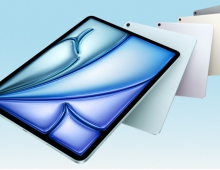
Apple to Add 3-D Cameras to New iPhones: report
Apple plans to launch iPhones with powerful 3-D cameras as soon as next year, stepping up the company’s push into augmented reality.
According to Bloomberg, the rear-facing, longer-range 3-D camera is designed to scan the environment to create three-dimensional reconstructions of the real world. It will work up to about 15 feet from the device, the report claims. That’s in contrast with the current iPhone 3-D camera system, which points toward users and operates at distances of 25 to 50 centimeters to power Apple’s Face ID facial-recognition feature.
Apple’s new system uses a laser scanner, rather than the existing dot-projection technology which doesn’t work as well over longer distances. A third, more advanced camera, enhanced photo-capture tools and a more powerful chip is also said to be planned in coming generations of iPhones.
The laser-powered 3-D camera would enhance augmented reality on the iPhone, allowing for more accurate depth perception and placement of virtual objects. It could also help the handset take photos that can better capture depth.
The laser-powered 3-D camera could also debut first on an upgrade to the iPad Pro currently planned for as early as spring 2020.
The 2020 iPhone camera may be a prelude to an AR headset that Apple has been preparing for as early as 2020.
For 2019, Apple plans successors to the iPhone XS and iPhone XS Max -- and an update to the iPhone XR, Bloomberg claims. The larger of the new high-end iPhones will have three cameras on the back, and other handsets could eventually come with the upgraded system, too, the report added. A third camera on the back of the 2019 iPhone will help the device capture a larger field of view and enable a wider range of zoom. It will also capture more pixels. The company is also said to be planning an enhanced version of its Live Photos feature, which pins video from before and after each shot to the photo. The new version will double the length of the video from three seconds to six seconds.
This year’s iPhone models are also expected to include an upgraded Apple processor and use an updated Face ID sensor for unlocking the device and approving payments.
Apple is also testing some versions of this year’s iPhone line that includes a USB-C connector instead of the Lightning port that has been used on iPhones since 2012, indicating that the company plans an eventual switch.
Beyond iPhones, Apple plans to release an updated version of its lower-cost iPad with a roughly 10-inch screen and a faster processor as early as this spring. The company is also readying a new, cheaper iPad mini, its smallest tablet that hasn’t been updated since 2015.
Bloomberg's sources also takled about Apple’s next operating system update, iOS 13. The new OS is said to include a dark mode option for easier nighttime viewing and improvements to CarPlay, the company’s in-vehicle software. There will also be iPad-specific upgrades like a new home screen, the ability to tab through multiple versions of a single app like pages in a web browser, and improvements to file management. The company will also integrate two new services, including a magazine subscription service and its original video content efforts, via iOS updates this year.
Apple declined to comment on the company’s plans.





















